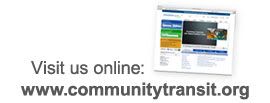
June 21 is National Dump the Pump Day, a rallying cry for transit agencies and advocates to use high gas prices as a way to get non-transit riders to consider taking the bus, train, ferry, etc.
The American Public Transportation Association conceived this day seven years ago and the catchy title, supported by grassroots activities across the country has helped to garner media attention every year. It is a great hook, especially since gas prices tend to rise at the beginning of summer.
Dump the Pump 2012 has presented some interesting concerns. While gas prices spiked earlier this spring, they have really gone down over the past 6-8 weeks. Even in the Northwest, where refinery problems kept the price of gas well above the national average, the last 1-2 weeks has seen a dramatic drop.
The region's transit agencies - those that participate in ORCA plus Intercity Transit in Olympia - rewrote our joint news release several times because of those dropping gas prices. There are some regional calculations in that release, and each time we revised the "current" price of a gallon of gas, those calculations had to be redone.
For Community Transit, our biggest concern over promoting Dump the Pump Day was that our commuter routes are pretty full. Since our latest round of service cuts in February, there are not a lot of empty seats on our peak-hour buses. We didn't want to make a loud call to non-transit users to try transit for this one day only to have them stand the entire ride and not want to come back. Nor did we want to create an even more crowded commute for our loyal riders who have stood with us in these trying times. (The image above is from Dump the Pump 2009.)
So, Community Transit is using Dump the Pump Day to get people to think of their favorite "Summer Destinations" that they can get to on transit. We have a Destinations page on our website with information about bus service to some of the more popular places to go in Snohomish County. We also want to know where frequent or infrequent riders get to on our buses.
Chances are your favorite destination is not work, so we don't think this promotes more riders for those peak-hour trips. But even during our busiest times, not all buses are packed.
Where do you like to take the bus during the summer? What are some trips you didn't think were possible, but have found you can make on our buses?












